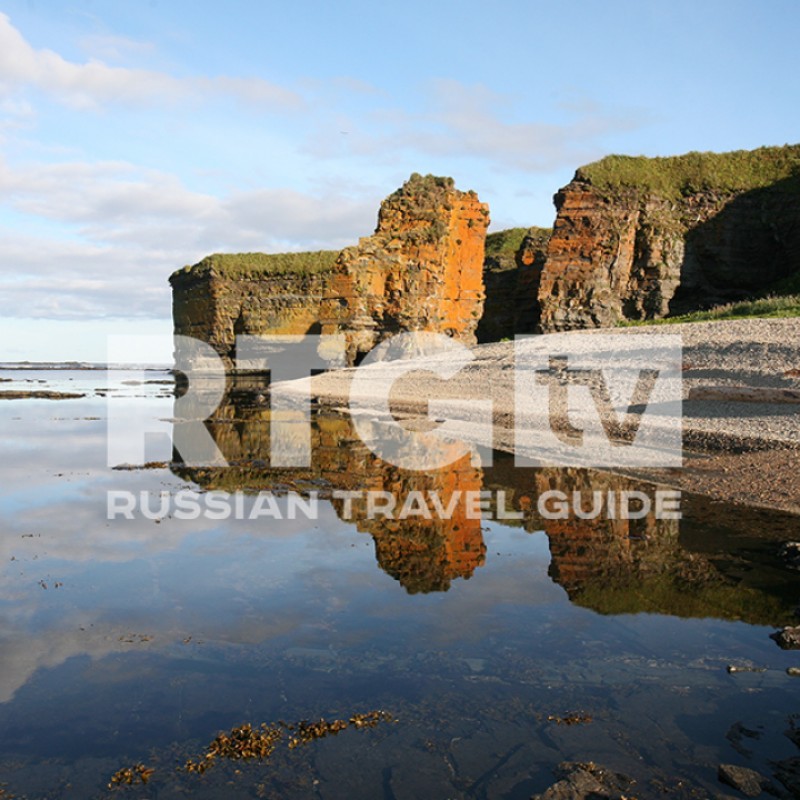
Nature
Nature
Year 2009
Duration 00:40:34
The Curonian Spit located in Kalinigrad region of Russia is a long sand-du ne spit stretched from southwest to northwest. It separates the Curonian Lagoon from the Baltic Sea. The Curonian Spit has been on UNESCO World Heritage List and is on the list of natural wonders of the world as the longest spit. Today the length of the Curonian Spit is 98 km. It was formed about 600 years ago. A small heap of islands used to occupy this place. By hitting them sea current became slower and sand accumulated on shoals. New islands rose there and shoals turned into sand dunes. This narrow line of land has been a comfortable road that connected Prussia, Baltic countries and Russia since times of crusaders. This is where during 5 centuries the army had been moving, goods and mail had been transported, carriages and stagecoaches had been driving, the Russian emperor Peter the Great and the Queen of Prussia Luisa had been passing by. In the 14th century the first settlements, taverns, post offices appeared along the road. People cut down the forest and the sand gone with the wind started to scatter over the road and the settlements. This is how the sand catastrophe happened. Local residents escaping from sand and water had to leave their houses and search for other places to live. Even doors in houses were made of two halves, the highest one was a way to get out. After sand had started to cover the road and the former reach in fish and shipping bay had become shallow, the government pondered over the preservation of the Spit. Thus the ecological project almost of 200 years old was born. It's referred to as the most expensive project in terms of the amount of work, working hours and investments ever in the history of human civilization. In this film Eugenia Altfeld will tell about how the Curonian Spit has been saved.
Presenter Evgeniya Al'tfel'd
Year 2009
Duration 00:40:34
Presenter Evgeniya Al'tfel'd
The Curonian Spit located in Kalinigrad region of Russia is a long sand-du ne spit stretched from southwest to northwest. It separates the Curonian Lagoon from the Baltic Sea. The Curonian Spit has been on UNESCO World Heritage List and is on the list of natural wonders of the world as the longest spit. Today the length of the Curonian Spit is 98 km. It was formed about 600 years ago. A small heap of islands used to occupy this place. By hitting them sea current became slower and sand accumulated on shoals. New islands rose there and shoals turned into sand dunes. This narrow line of land has been a comfortable road that connected Prussia, Baltic countries and Russia since times of crusaders. This is where during 5 centuries the army had been moving, goods and mail had been transported, carriages and stagecoaches had been driving, the Russian emperor Peter the Great and the Queen of Prussia Luisa had been passing by. In the 14th century the first settlements, taverns, post offices appeared along the road. People cut down the forest and the sand gone with the wind started to scatter over the road and the settlements. This is how the sand catastrophe happened. Local residents escaping from sand and water had to leave their houses and search for other places to live. Even doors in houses were made of two halves, the highest one was a way to get out. After sand had started to cover the road and the former reach in fish and shipping bay had become shallow, the government pondered over the preservation of the Spit. Thus the ecological project almost of 200 years old was born. It's referred to as the most expensive project in terms of the amount of work, working hours and investments ever in the history of human civilization. In this film Eugenia Altfeld will tell about how the Curonian Spit has been saved.
You may also like